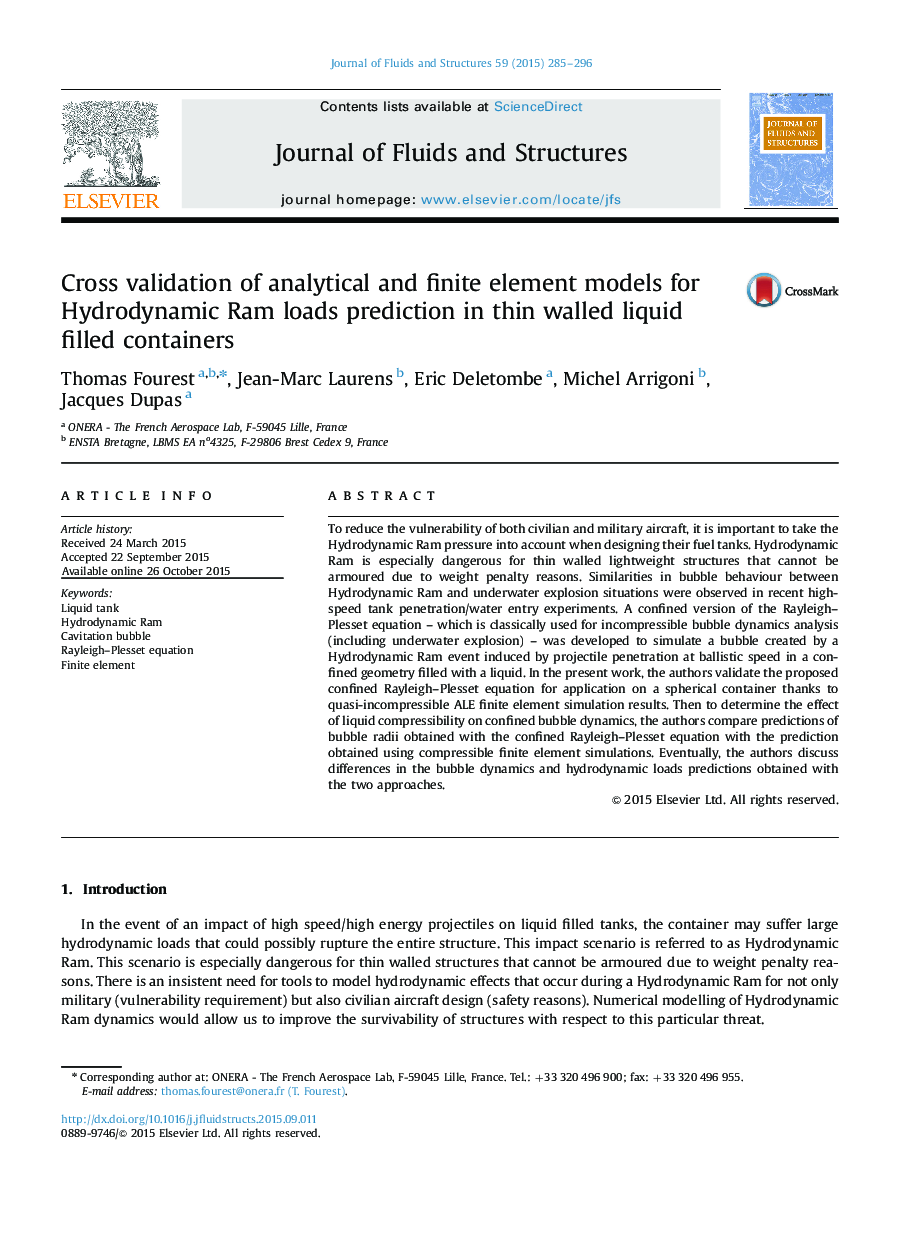| Article ID | Journal | Published Year | Pages | File Type |
|---|---|---|---|---|
| 793354 | Journal of Fluids and Structures | 2015 | 12 Pages |
To reduce the vulnerability of both civilian and military aircraft, it is important to take the Hydrodynamic Ram pressure into account when designing their fuel tanks. Hydrodynamic Ram is especially dangerous for thin walled lightweight structures that cannot be armoured due to weight penalty reasons. Similarities in bubble behaviour between Hydrodynamic Ram and underwater explosion situations were observed in recent high-speed tank penetration/water entry experiments. A confined version of the Rayleigh–Plesset equation – which is classically used for incompressible bubble dynamics analysis (including underwater explosion) – was developed to simulate a bubble created by a Hydrodynamic Ram event induced by projectile penetration at ballistic speed in a confined geometry filled with a liquid. In the present work, the authors validate the proposed confined Rayleigh–Plesset equation for application on a spherical container thanks to quasi-incompressible ALE finite element simulation results. Then to determine the effect of liquid compressibility on confined bubble dynamics, the authors compare predictions of bubble radii obtained with the confined Rayleigh–Plesset equation with the prediction obtained using compressible finite element simulations. Eventually, the authors discuss differences in the bubble dynamics and hydrodynamic loads predictions obtained with the two approaches.
